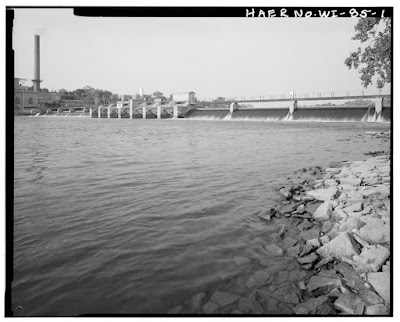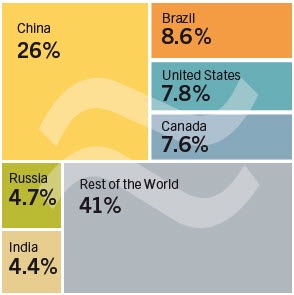Upstream in China, seven dams exist with plans for up to 21 more. Downstream in Cambodia and Laos, there are another 11 proposed, with the controversial Xayaburi Dam in Laos nearing completion. The Mekong is of particular importance because of its rich variety of aquatic species; it is a biodiversity hotspot, second only to the Amazon River. Not only is the Mekong of huge environmental significance, there is a large population that live around the Mekong, relying on subsistence fishing for survival. The proposed construction of these dams has therefore raised tremendous concern which in turn has led to research on the impacts of increased hydropower production on the river.
In 2012, Ziv et al. (2012) conducted a study into the six different dam scenarios that had been outlined by the Mekong River Commission. The results concluded that biodiversity and productivity would be most severely affected if dams in the upstream tributaries were constructed, however there would be a far lower impact on biodiversity and subsistence fishing with the construction of the proposed downstream dams.
Another environmental impact of hydropower in the Mekong is highlighted in Anthony et al's (2015) study. Erosion in the Mekong Delta is a significant consequence of the dams that have been constructed upstream; because sediment has been retained behind the dams, sediment supply to the delta has been reduced. As a result, circa 5km2 of coastline was been lost between 2003 and 2012.
 |
| The Mekong Delta, Vietnam Source: Britannica |
There are, of course, benefits in the construction of these dams. By 2021, Thailand aims to reduce its reliance on fossil fuels by generating 25% of its electricity from renewable resources. In order to achieve this, it will be using 90% of the energy produced from the Xayaburi Dam and by 2025, the other 11 proposed downstream hydropower plants in the Mekong could potentially meet between 6-8% of South-East Asia's electricity demand.
With COP21 nearing, there is a huge expectation for nations such as these to move towards renewable energy sources, and in the majority of these countries, due to the high levels of rainfall and steep topography, the most abundant resource is hydropower.
However, there appears to be a trade off; dams have global and national benefits through the low CO2 emissions and will respond to immediate spikes in energy requirements; however, in many cases, there are also significant ecological and social impacts. It seems that a decision must be made about which environmental impact is less detrimental to the future of our planet.
I must say, I've struggled to form an opinion on hydropower in the Mekong. I am all for clean energy and it is promising that developing countries are meeting their energy demand in a more sustainable way, but I find it hard to ignore the huge impacts that this has on biodiversity, especially with new research stating that we could be entering the sixth mass extinction. Ziv et al's study shows that some of the main-stem dams have lower impact on biodiversity, therefore I am inclined to support the construction of these lower impact dams and would look to meet remaining energy demand with alternative forms of sustainable energy.









